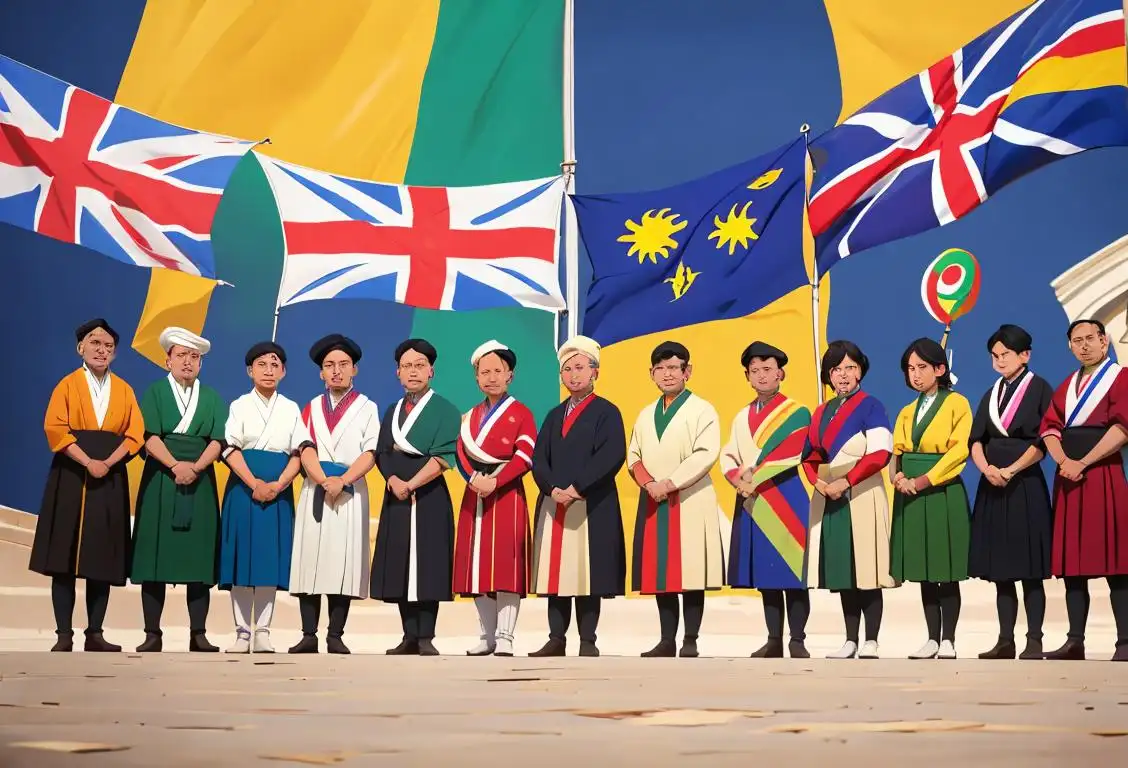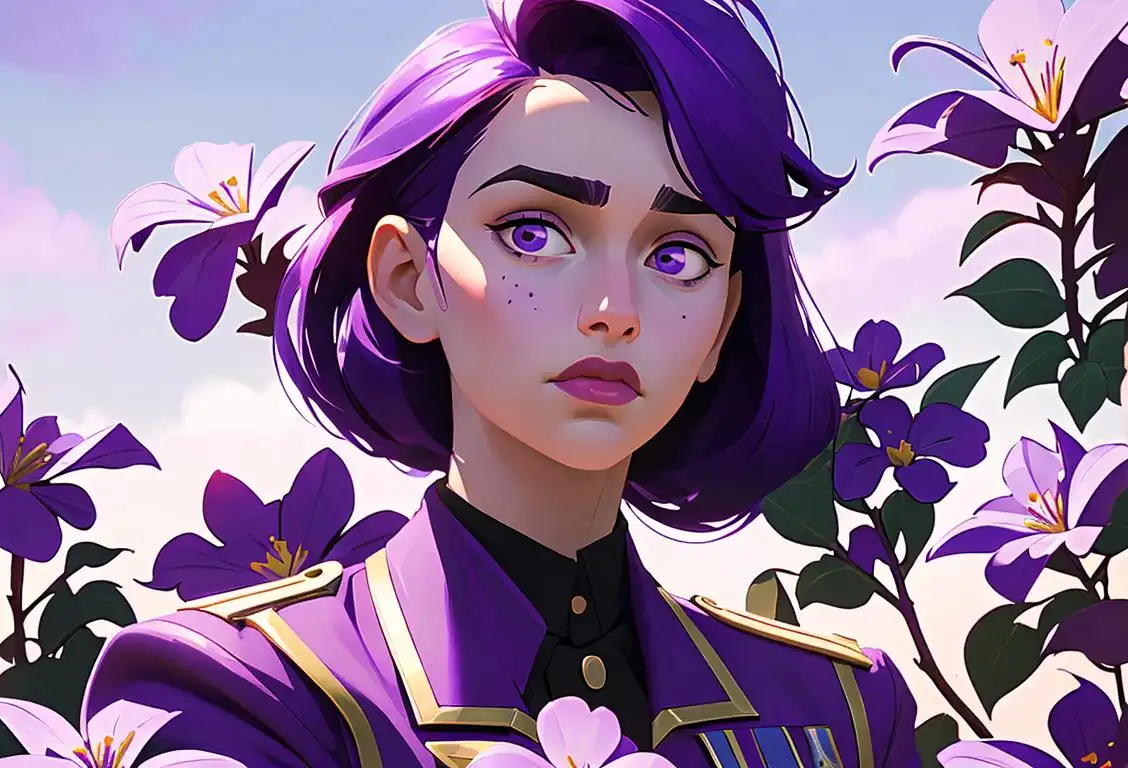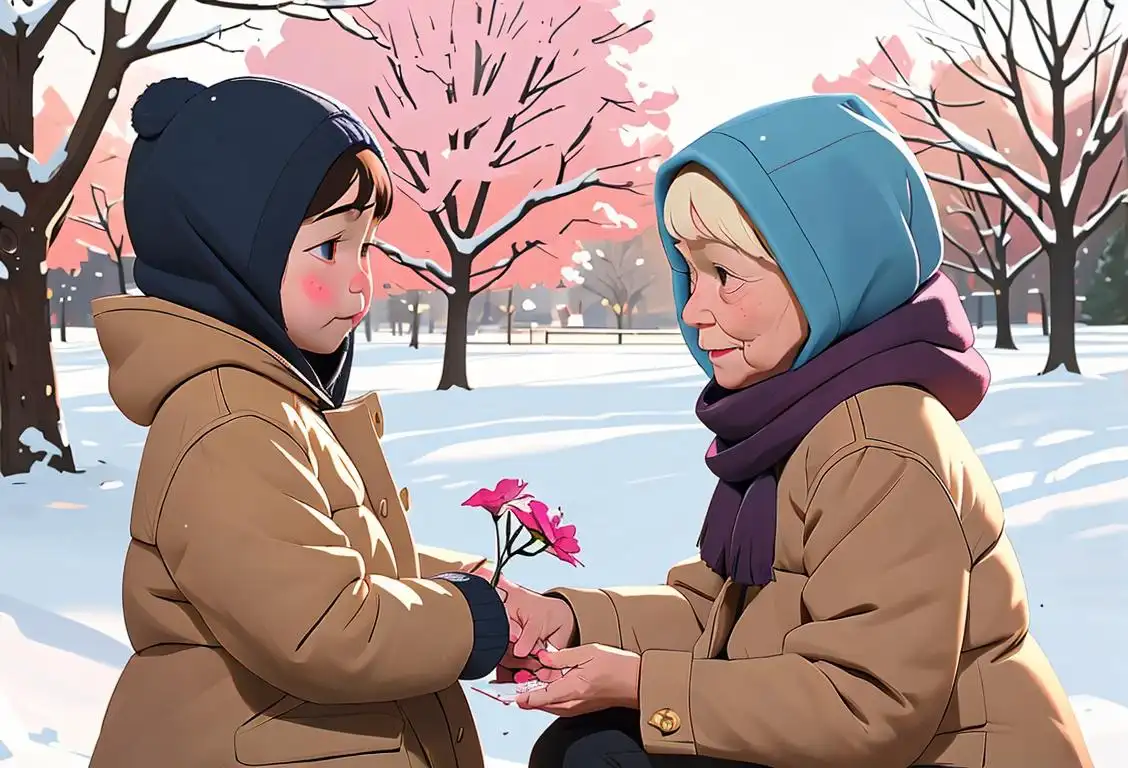National Symbols Day

Hey there, fellow history enthusiasts! Today, we're diving into the wonderful world of National Symbols Day. Get ready to uncover the fascinating treasures that make our countries unique and iconic!
When is Symbols Day?
It's national symbols day on the 4th June.
A Celebration of National Pride and Identity
National Symbols Day is a beautifully uplifting occasion that allows us to reflect on the powerful emblems that define our nations. From majestic flags and enchanting anthems to noble animals and historic landmarks, these symbols convey the essence of our countries in a way that unites and inspires us all.
Throughout history, societies have used national symbols to cultivate a shared sense of identity, instilling a sense of pride and belonging among their citizens. These symbols often reflect a country's history, culture, and aspirations, serving as a visual representation of its core values and ideals. National Symbol Day provides an opportunity to honor these cherished emblems and recognize the important role they play in shaping our collective heritage.
A Ride through Symbolic History
The origins of many national symbols can be traced back through the annals of time, revealing intriguing stories of cultural significance. Take, for example, the iconic bald eagle, which epitomizes the spirit and resilience of the United States. This majestic bird was chosen as the country's national bird in 1782, serving as a symbol of freedom, power, and grace.
In Canada, the beloved maple leaf holds a special place in the hearts of citizens. Not only is it prominently featured on the country's flag, but it also represents peace, unity, and tolerance. Similarly, the intricate patterns of the Mandala have deep historical and spiritual significance in many Asian countries, symbolizing the unity of body, mind, and spirit.
Celebrate with Pride and Joy
There are countless ways to embrace the vibrancy of National Symbols Day. Why not organize a flag-raising ceremony in your local community, proudly displaying your country's colors? You could also delve into the history and symbolism of your national emblem, uncovering hidden stories and fascinating facts.
For those feeling creative, why not design your own national emblem? Whether it's a funky new flag or a majestic creature, let your imagination soar and capture the true spirit of your nation. Share your creations online using the hashtag #NationalSymbolsDay to spread the joy and inspire others!
History behind the term 'Symbols'
1709
The Birth of Semiotics
The term 'symbols' finds its origins in the study of semiotics, a field developed by Swiss linguist and philosopher Ferdinand de Saussure. In his groundbreaking book 'Course in General Linguistics' published in 1916 (though the lectures were given in 1907-1911), de Saussure introduced the concept of 'signs' and 'symbols' as a means of understanding language and communication. According to de Saussure, a sign is formed by the combination of two elements: the 'signifier' (the symbol or word) and the 'signified' (the concept or meaning). This distinction laid the foundation for the modern understanding of symbols.
1964
Symbolic Interactionism
The year 1964 marked a significant development in the study of symbols with the introduction of the theory of symbolic interactionism by sociologist Herbert Blumer. Blumer argued that symbols play a central role in human interaction and social life. He believed that individuals assign meanings to symbols and that these meanings shape their behavior and perceptions of the world. Blumer's theory paved the way for further research on the symbolic nature of communication, identity, and social interaction.
1997
Symbolism in Art and Literature
Symbols have long been used in various forms of artistic expression, but it was in the late 19th and early 20th centuries that symbolism as a movement emerged in art and literature. Symbolist artists and writers sought to convey deeper, often hidden meanings through symbolic representations. Artists like Gustav Klimt, Odilon Redon, and writers such as Charles Baudelaire and Oscar Wilde embraced symbolism to explore themes of spirituality, dreams, and the subconscious. This artistic movement contributed to the popularization and appreciation of symbols as powerful visual and literary devices.
1990s
The Rise of Emoji Symbols
In the 1990s, the digital era brought a new dimension to the concept of symbols with the introduction of emojis. Emojis are small pictorial symbols used in electronic messaging, often conveying emotions or ideas. The first set of standardized emojis was created by Shigetaka Kurita in 1999 for a Japanese mobile operator. Over time, emojis gained widespread popularity, becoming a universal language in digital communication. Today, emojis are an integral part of modern communication, transcending language barriers and enriching our online interactions.
Present Day
Symbols in Branding and Identity
In the present day, symbols continue to hold great significance in branding and identity. Companies and organizations use carefully crafted symbols, such as logos and icons, to represent their values, products, and services. These symbols serve as visual cues that evoke emotions and establish connections with consumers. Think of iconic symbols like the Nike swoosh or the Apple logo, instantly recognizable worldwide. Symbols in branding have the power to shape perceptions, build loyalty, and create lasting impressions.
Did you know?
Did you know that the United Kingdom's Union Jack is a blend of three national flags? It combines elements from the flags of England (St. George's Cross), Scotland (St. Andrew's Cross), and Northern Ireland (the red saltire of Saint Patrick). No wonder it's such a striking and unique symbol!Tagged
awareness fun historyFirst identified
4th June 2017Most mentioned on
4th June 2020Total mentions
35Other days
Purple Heart Day
Bourbon Day
Teacher Appreciation Day
Random Acts Of Kindness Day
Former Prisoner Of War Recognition Day
Vodka Day
Memorial Day
Liberation Day
Convention Day
Flag Of Canada Day









